In recent years, the work of the ninety-four-year-old artist Betye Saar has experienced something of a critical reappraisal, with major retrospectives appearing concurrently at the Museum of Modern Art and the Los Angeles County Museum of Art in 2019. When asked why this sudden resurgence in attention might be occurring, she replied: “Because it’s about time! I’ve had to wait till I’m practically 100.” It’s baffling that she had to wait at all: Saar’s work, especially her Joseph Cornell–inspired assemblages, is without peer. Thankfully, a new show at the Crocker Art Museum, in Sacramento, California, suggests that talent travels matrilineally in the Saar family. “Legends from Los Angeles,” which will be on view through August 15, features twenty-three works by Betye and her daughters Alison and Lezley. A selection of images from the exhibition appears below.
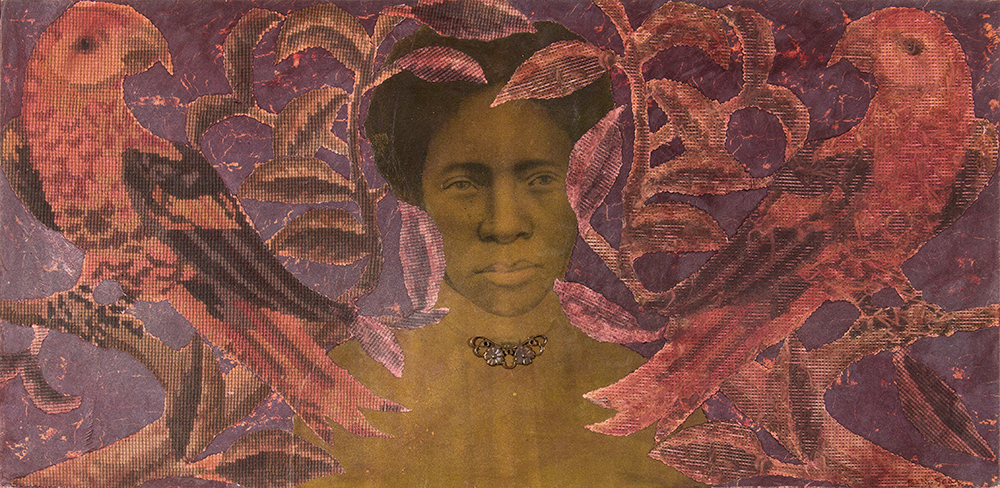
Betye Saar, Woman with Two Parrots, 2010, mixed-media collage on paperboard, 12 x 24 5/8″. Crocker Art Museum, gift of Emily Leff and James Davis III. © Betye Saar / Roberts Projects, Los Angeles, California.
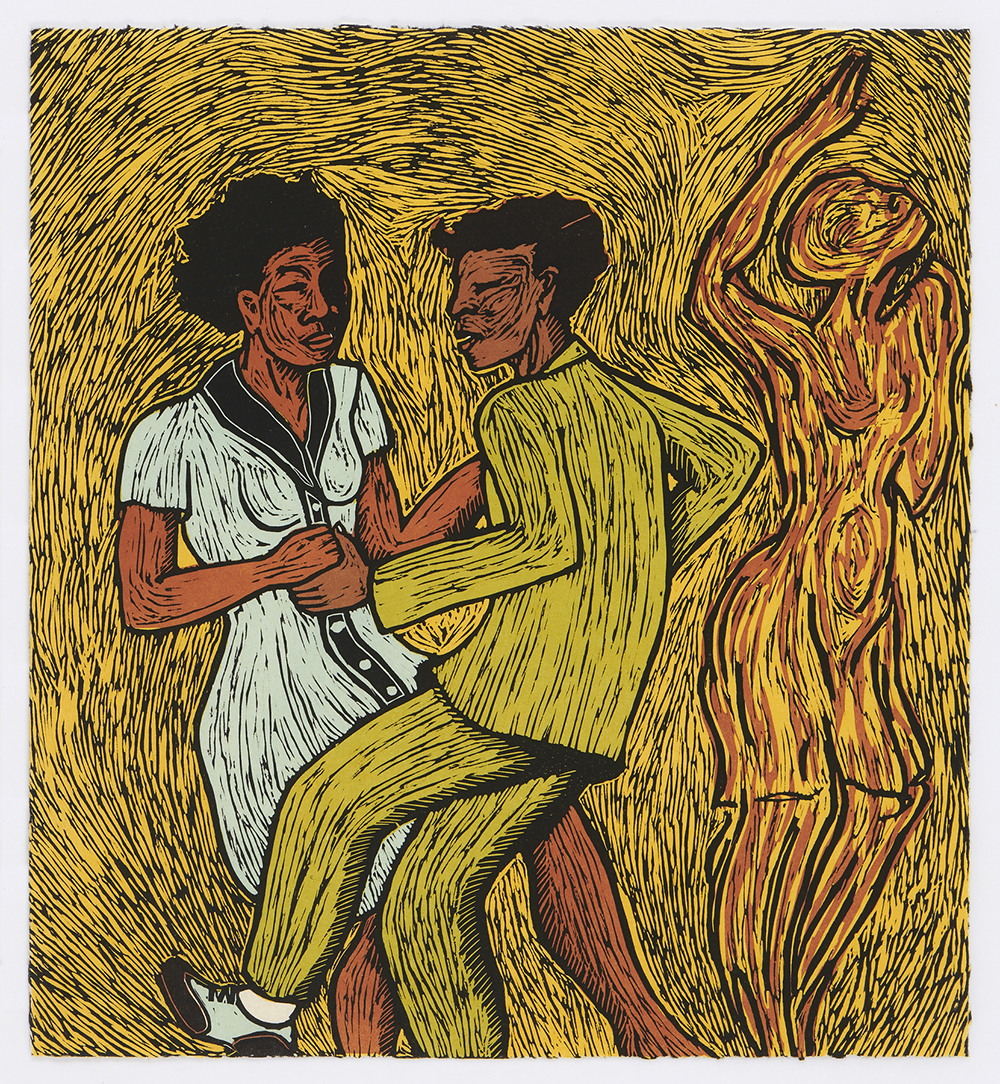
Alison Saar, Jitterbug, from the Copacetic portfolio, 2019, linocut on handmade Japanese Hamada kozo paper, 19 1/2 x 18″. Crocker Art Museum purchase with funds provided by the Marcy and Mort Friedman Acquisition Fund; and Janet Mohle-Boetani, M.D., and Mark Manasse. © Alison Saar. Photo courtesy of Catharine Clark Gallery and Mullowney Printing.
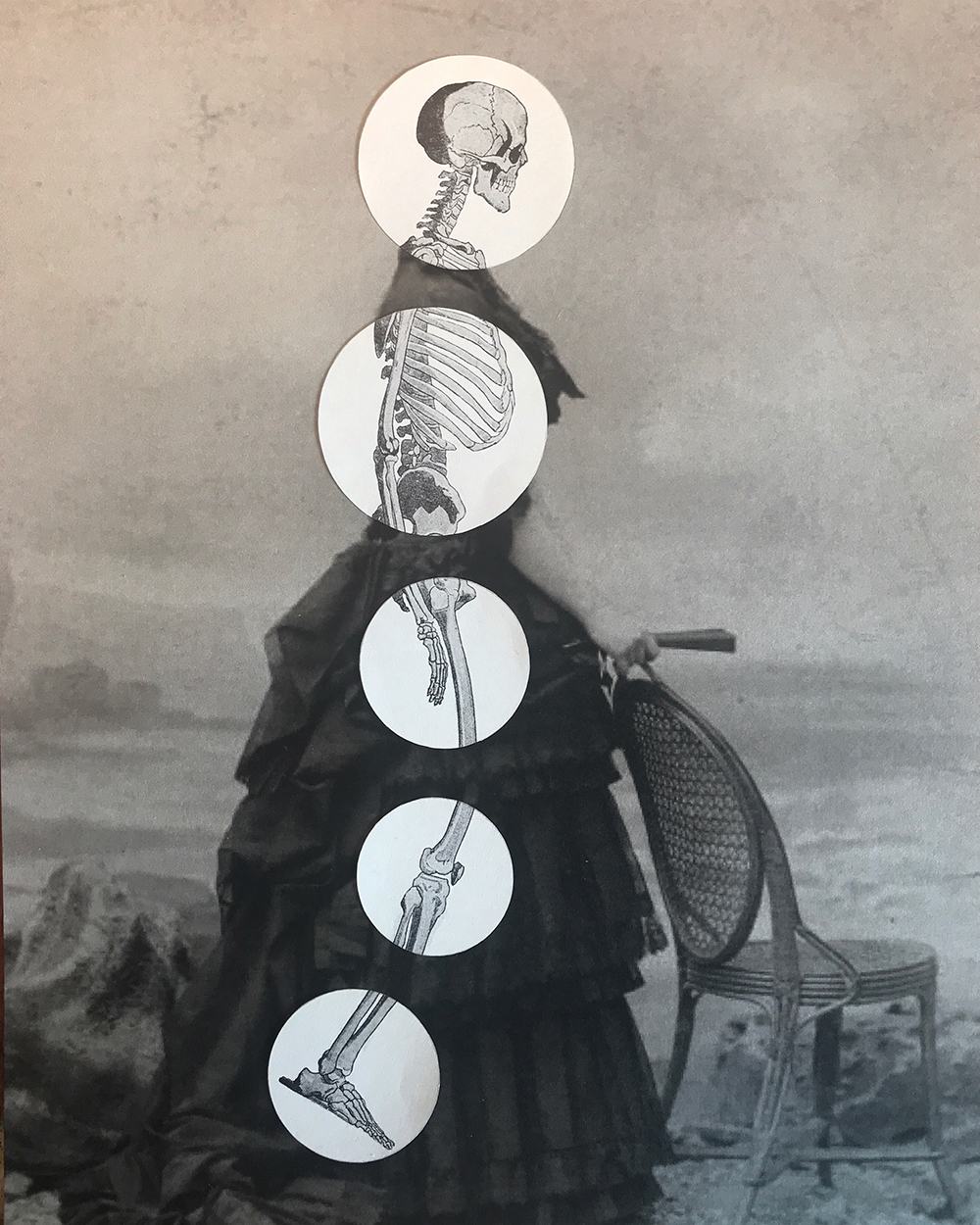
Lezley Saar, I turned my back on the ocean, 2019, paper collage on photograph, 10 1/2 x 8 1/4″. Crocker Art Museum purchase with funds from the Forrest and Shirley Plant Fund. © Lezley Saar. Photo: Agust Agustsson, courtesy of Walter Maciel Gallery.
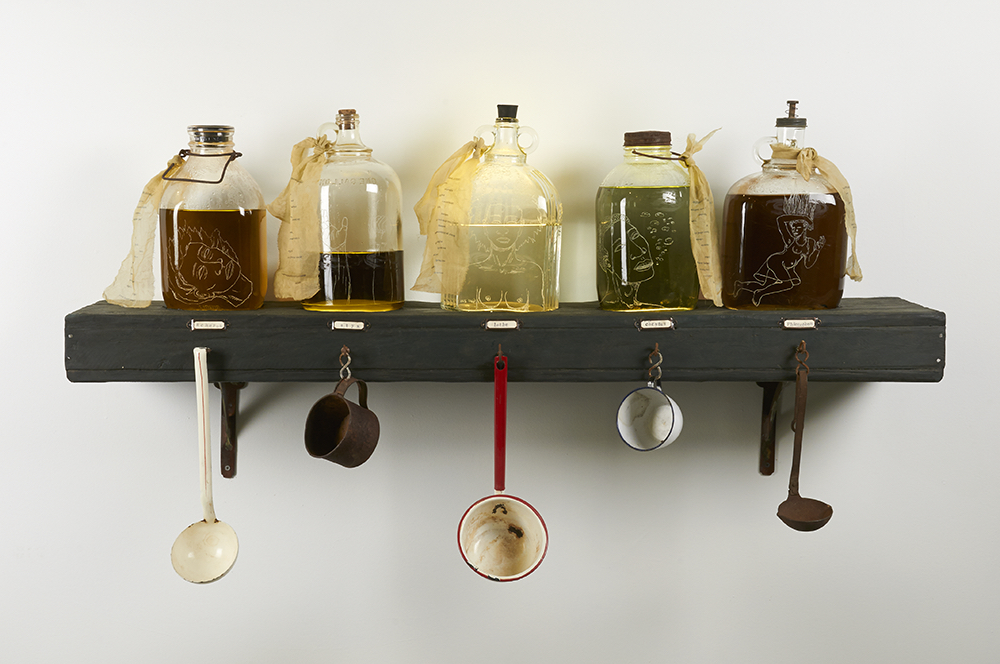
Alison Saar, Hades D.W.P. II, 2016, etched glass jars, water, dye, wood, cloth and ink transfer, electronics, and found ladles and cups, 30 x 50 x 16″. Crocker Art Museum, gift of Loren G. Lipson, M.D. © Alison Saar. Photo: John Wynn / Lafayette Art Galleries.
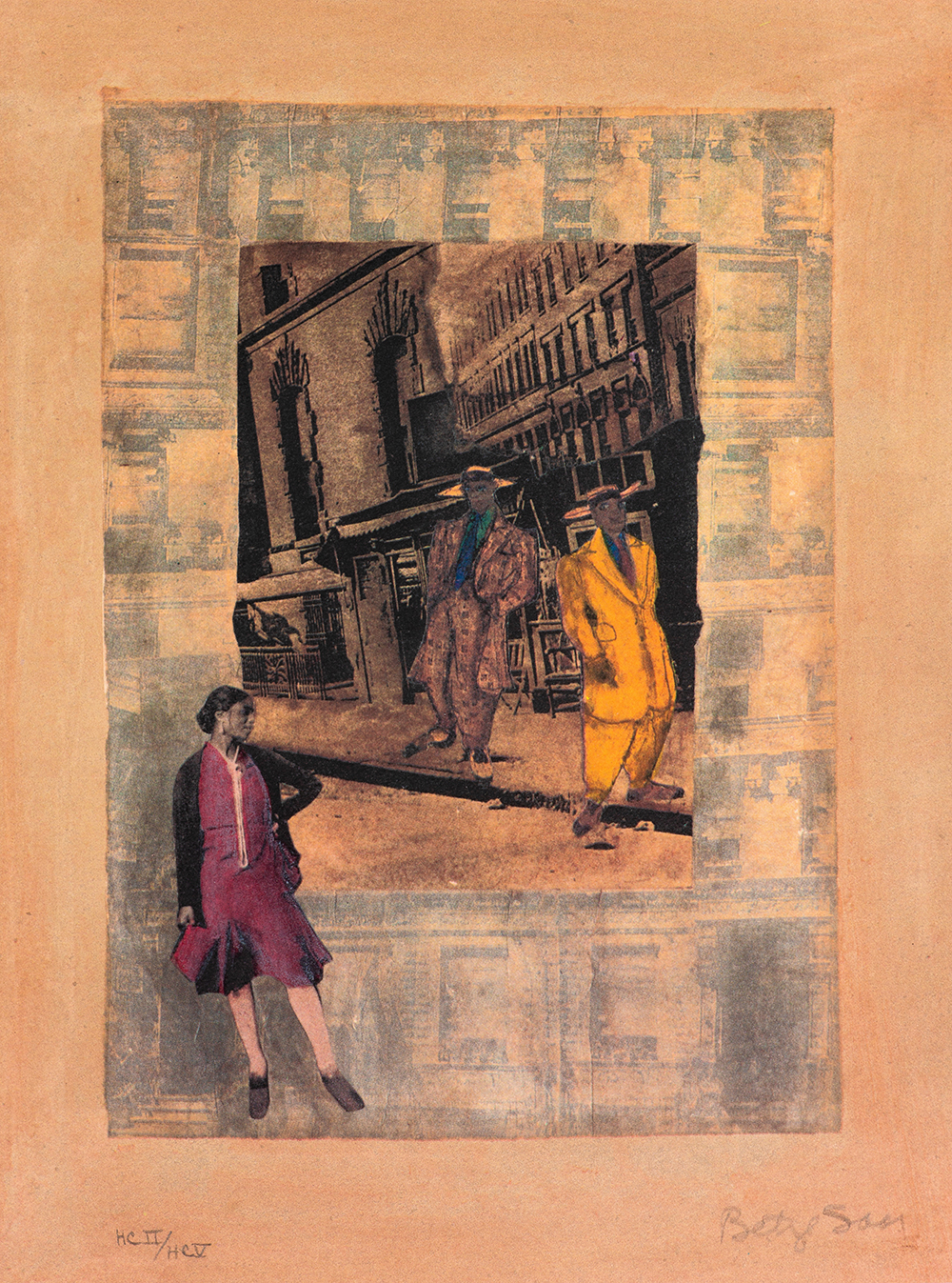
Betye Saar, Now You Cookin’ with Gas, from the series “Six Serigraphs: Bookmarks in the Pages of Life,” 2000, serigraph, 14 1/2 x 11″. Crocker Art Museum, gift of Loren G. Lipson, M.D. © Betye Saar / Roberts Projects, Los Angeles, California.
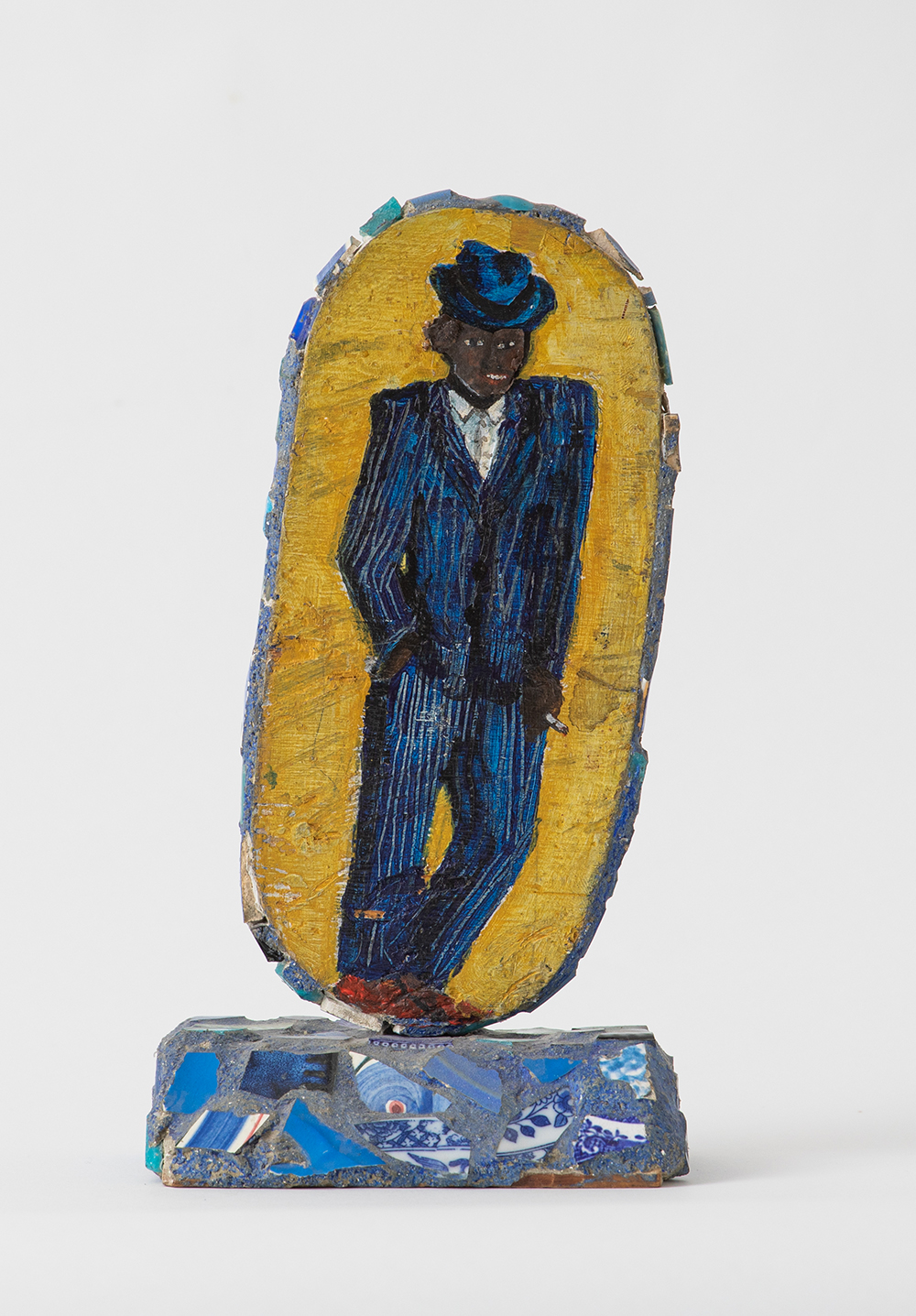
Alison Saar, Man in Blue Suit, 1981, mixed media, 10 1/2 x 5 1/2 x 3 1/2″. Crocker Art Museum, gift of Emily Leff and James Davis III. © Alison Saar.
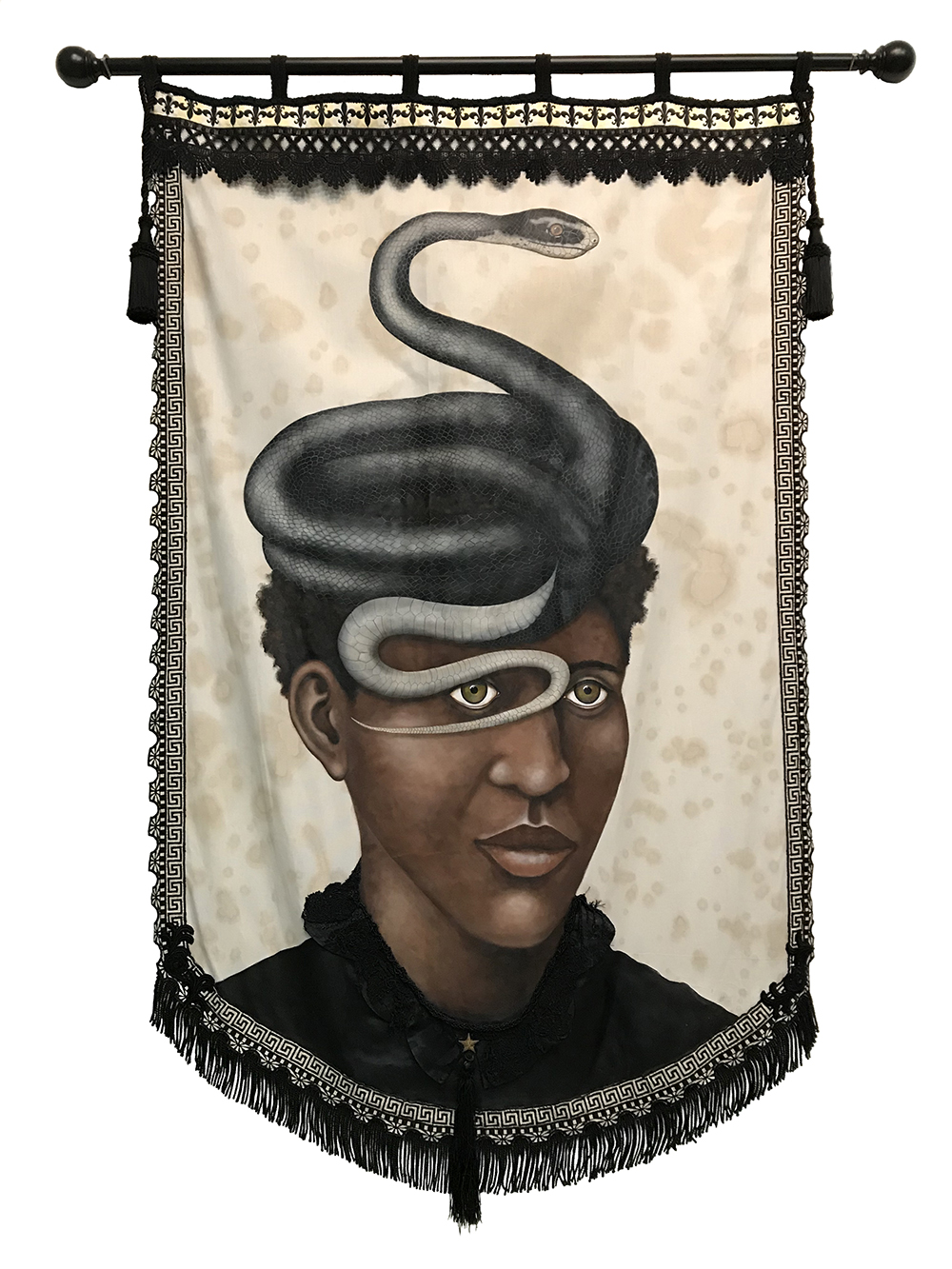
Lezley Saar, Zerpenta Dambullah: Born under the shade of a black willow tree in New Orleans in 1826 sat on a rock turning rain into tobacco smoke, 2019, acrylic on fabric with fringing, braided tassels, and curtain rod, 68 x 40″. Crocker Art Museum purchase with funds provided by Emily Leff and James Davis III. © Lezley Saar. Photo: Agust Agustsson, courtesy of Walter Maciel Gallery.

Betye Saar, Remember Friendship, 1975, mixed media, 10 3/4 x 17 1/8 x 1 1/4″. Crocker Art Museum, gift of the Sacramento Chapter of Links, Inc. © Betye Saar / Roberts Projects, Los Angeles, California.
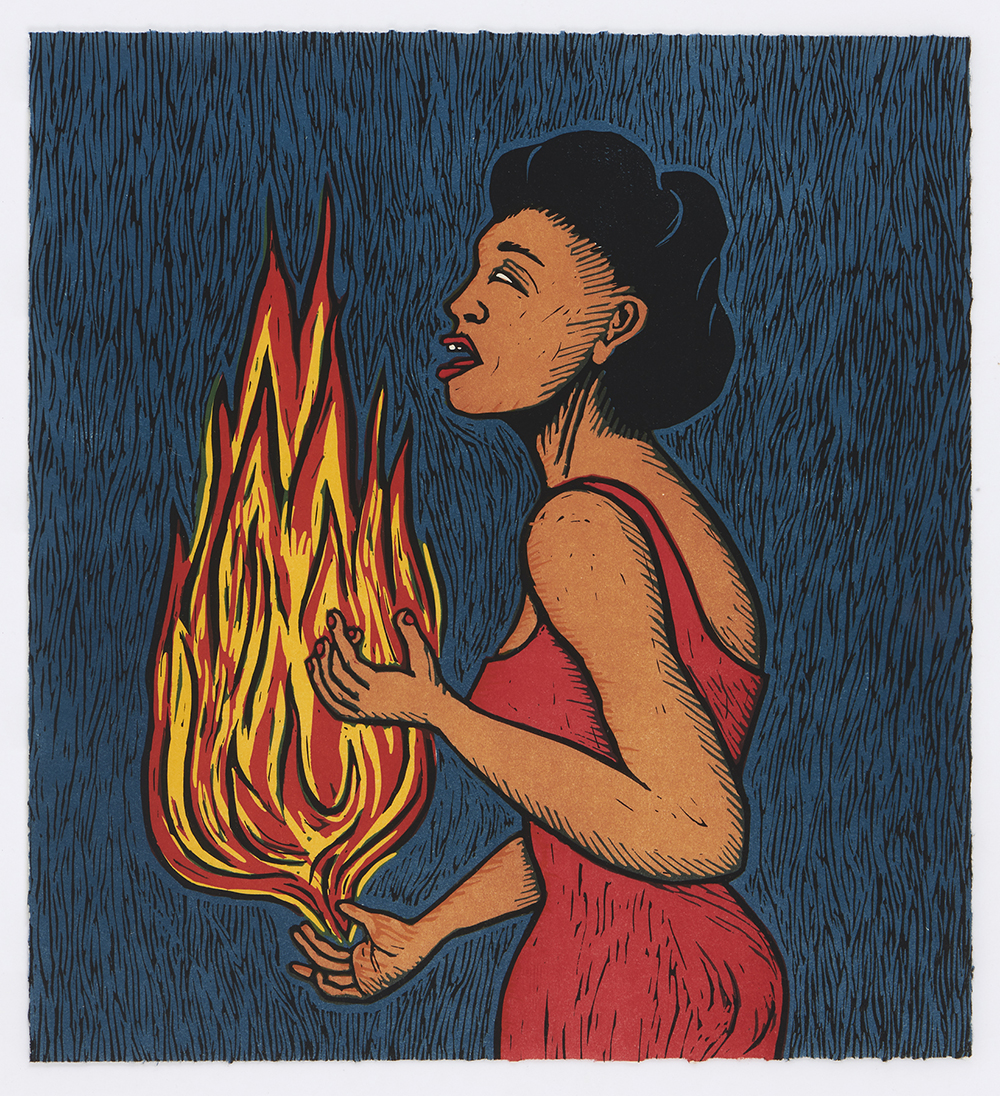
Alison Saar, Torch Song, from the Copacetic portfolio, 2019, linocut on handmade Japanese Hamada kozo paper, 19 1/2 x 18″. Crocker Art Museum purchase with funds provided by the Marcy and Mort Friedman Acquisition Fund; and Janet Mohle-Boetani, M.D., and Mark Manasse. © Alison Saar. Photo courtesy of Catharine Clark Gallery and Mullowney Printing.
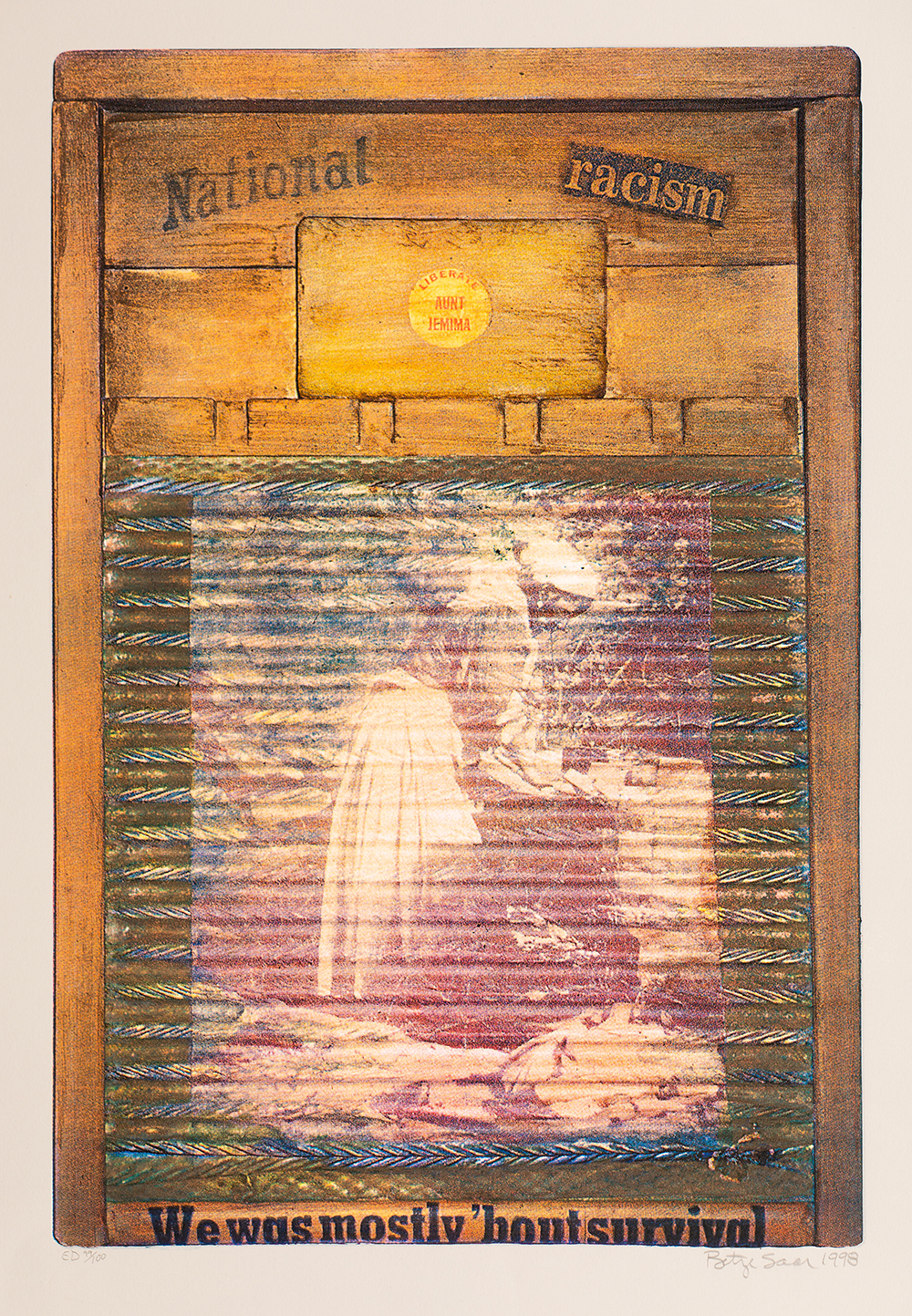
Betye Saar, We Was Mostly ’Bout Survival, 1998, serigraph, 25 5/8 x 19 7/8″. Crocker Art Museum, gift of Shirley and Guy Moore. © Betye Saar / Roberts Projects, Los Angeles, California.
“Legends from Los Angeles” will be on view at the Crocker Art Museum, in Sacramento, California, through August 15.
from The Paris Review https://ift.tt/3bhhUtN
Comments
Post a Comment